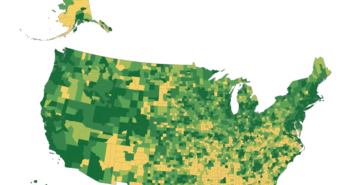Data Notes
Many Americans have broadband internet in their homes, but more and more people see it as a need internet access to be successful in daily life. Leveraging data from the Census Bureau’s American Community Survey Public Use Microdata Sample, this data visualization explores broadband internet access. In home uptake that can differ by household income, age, educational attainment, location, and other topics.
This visualization also lets you filter by age to get more precise measures since the estimates include all people. Typically for measures such as educational attainment, children and young adults are excluded because they haven’t hit haven’t finished their education. Having this filter allows users to make determination on the age ranges that are important to them.
Definition of High Speed Internet
You might wonder what the definition of high speed internet is used for this visualization. To gather this data, the Census Bureau asks a number of different questions. To determine if a home has high speed internet access they ask the following question, “Do you or any member of this household have access to the Internet using a broadband (high speed) Internet service such as cable, fiber optic, or DSL service installed in this household?”
While this question doesn’t ask about upload and download speeds, all these types of internet connection meet the FCC’s broadband definition of 25 mb download and 3 mb upload speed. The FCC uses data from the American Community Survey to understand broadband uptake for different demographic and economic characteristics.
Considerations When Using Public Use Microdata
Also, some may notice that other figures published by the Census Bureau place broadband access at closer to 93%. This data product from the Census Bureau seems to report out a lower percentage of 85%. This data product gives us the ability to create custom tabulations and the 85% should be used as a reference point for the data set. Official estimates on broadband access likely are closer to 93%. Reasons for this difference are explained on the Census Bureau’s website.
To gather the data, I utilized a Python script to scrape the 2022 ACS data from the Census Bureau’s API. I then visualized the data through Tableau.
Follow @overflow_data on X, Instagram, or sign up to receive emails about our newest visualizations.
